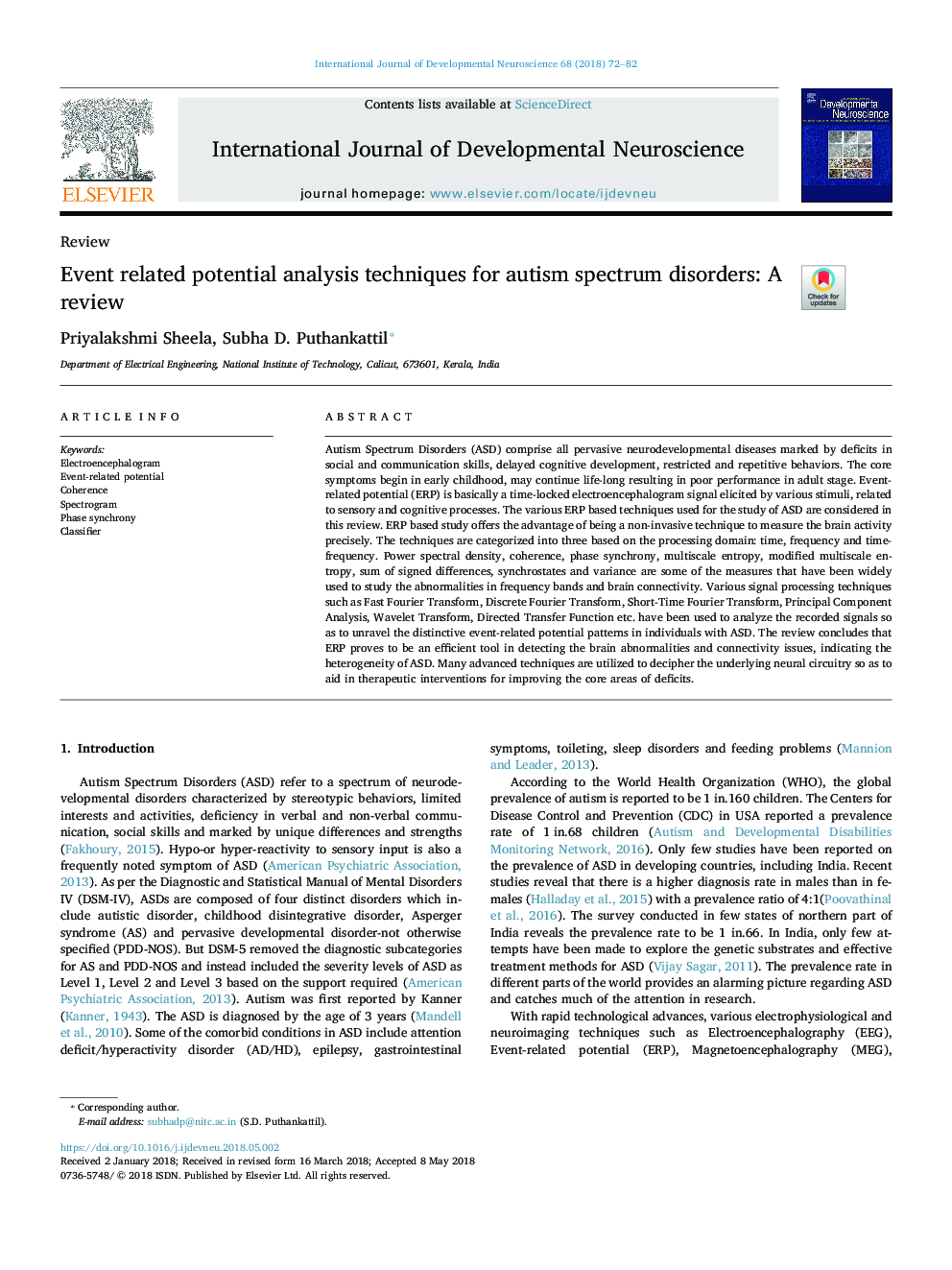| Article ID | Journal | Published Year | Pages | File Type |
|---|---|---|---|---|
| 8626039 | International Journal of Developmental Neuroscience | 2018 | 11 Pages |
Abstract
Autism Spectrum Disorders (ASD) comprise all pervasive neurodevelopmental diseases marked by deficits in social and communication skills, delayed cognitive development, restricted and repetitive behaviors. The core symptoms begin in early childhood, may continue life-long resulting in poor performance in adult stage. Event-related potential (ERP) is basically a time-locked electroencephalogram signal elicited by various stimuli, related to sensory and cognitive processes. The various ERP based techniques used for the study of ASD are considered in this review. ERP based study offers the advantage of being a non-invasive technique to measure the brain activity precisely. The techniques are categorized into three based on the processing domain: time, frequency and time-frequency. Power spectral density, coherence, phase synchrony, multiscale entropy, modified multiscale entropy, sum of signed differences, synchrostates and variance are some of the measures that have been widely used to study the abnormalities in frequency bands and brain connectivity. Various signal processing techniques such as Fast Fourier Transform, Discrete Fourier Transform, Short-Time Fourier Transform, Principal Component Analysis, Wavelet Transform, Directed Transfer Function etc. have been used to analyze the recorded signals so as to unravel the distinctive event-related potential patterns in individuals with ASD. The review concludes that ERP proves to be an efficient tool in detecting the brain abnormalities and connectivity issues, indicating the heterogeneity of ASD. Many advanced techniques are utilized to decipher the underlying neural circuitry so as to aid in therapeutic interventions for improving the core areas of deficits.
Related Topics
Life Sciences
Biochemistry, Genetics and Molecular Biology
Developmental Biology
Authors
Priyalakshmi Sheela, Subha D. Puthankattil,
